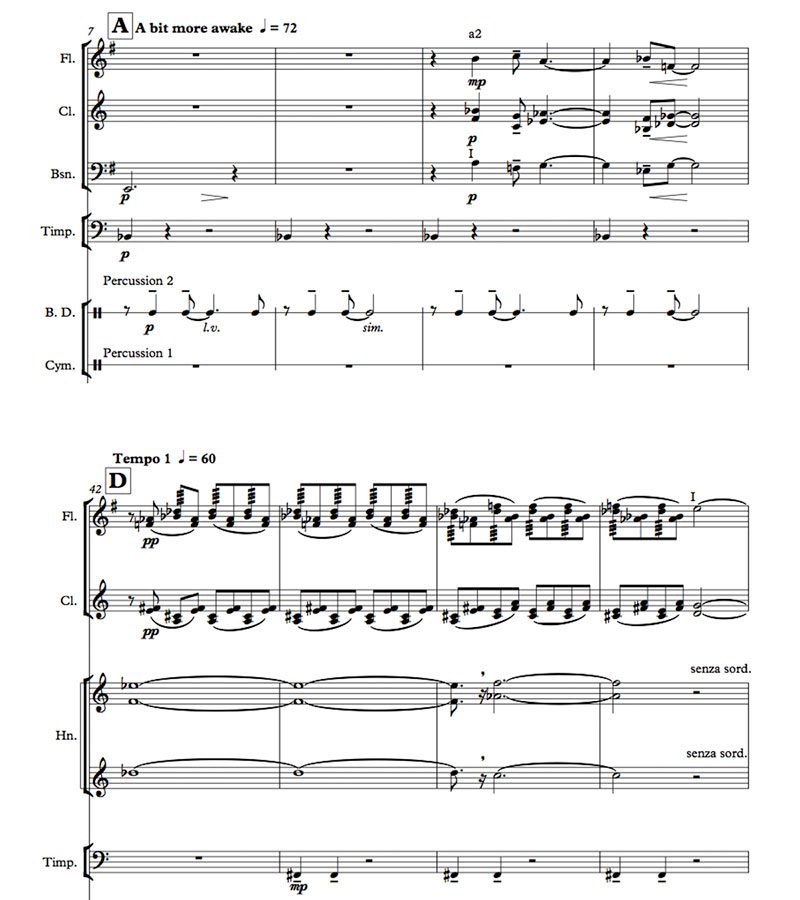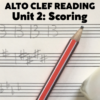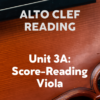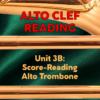The lowest octave of the flute is tricky to balance, but effective if handled correctly. The conventional wisdom is to avoid using this register unless very thinly accompanied – but it’s more complicated than that, and an orchestrator with a keen ear can find unexpected opportunities.
In the following two excerpts from movement 2 of my harp concerto, I score for this register in two different ways, both in group textures. The first is as a melody, the top note of a chorale with clarinets and bassoon 1. Note that while the lower lines of the chorale have one instrument each, the top line is played by doubled flutes. This is not for balance, but for solidity and for a blended (rather than soloistic) tone. The balance is provided by the flutes being one dynamic degree higher than the other winds. I could have used my favorite auxiliary, the bass clarinet (see yesterday’s tip), as the bottom line – but that might have resulted in too many of the wrong type of overtones being reinforced in the flutes. Also, it would have made the clarinet timbre dominate. The bassoon encourages the tones to blend because of its own very complex timbre underpinning each chord.
The second example is part of a very delicate harmonic texture. The horns are playing ppp, along with gently pulsing strings and tremolo basses. The flutes and clarinets push slightly at the rhythm of each pulse, like the slight flex of tone in a heartbeat. Here, the flutes will blend into the harmonic cushion, but not be swallowed, because of the character of the textural elements that surround them. The horns and strings create a radiant, complex chord, while the clarinets and flutes have a cooler combined tone in the center of the sound picture.









